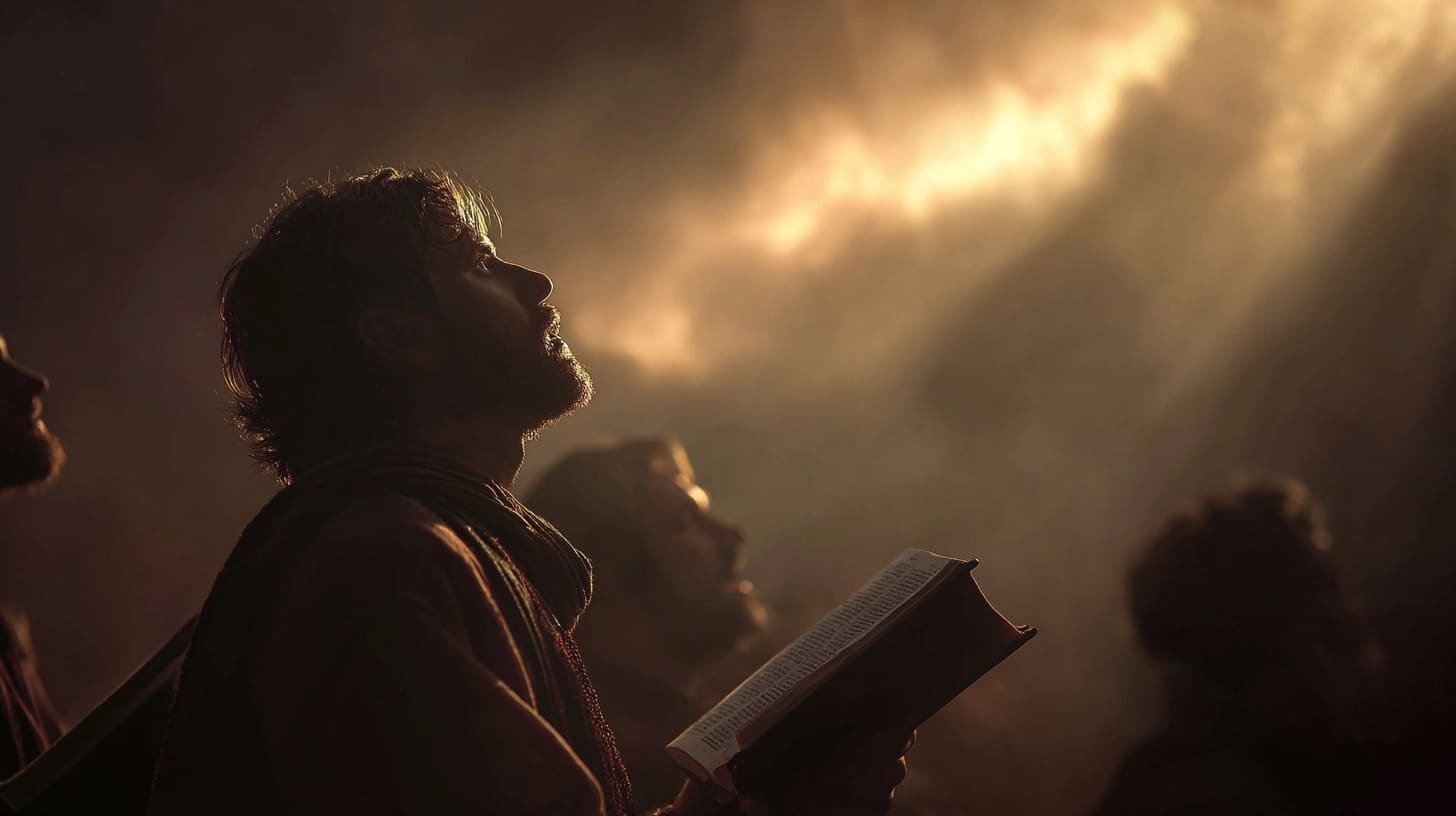
It begins with a sound.
Trumpets echo across the horizon. The air trembles. Shadows bend. And in a single heartbeat… gone.
Graves break open.
Clouds roll with glory.
The earth looks lighter somehow, as if a great weight has been lifted.
Those who belong to Christ rise. Every tear, every scar, every ounce of mortality left behind.
The Lord descends to meet His people in the air.
“For the Lord Himself will come down from heaven, with a loud command, with the voice of the archangel and with the trumpet call of God, and the dead in Christ will rise first.” (1 Thessalonians 4:16)
It’s the moment history bends toward. It’s meant to be the great reunion where heaven meets earth in midair.
This is the rapture.

The word “rapture” doesn’t appear in your Bible. But the idea of the rapture certainly shows up multiple times.
Ready for a language lesson?
The term ‘rapture’ comes from the Latin word ‘rapturo’, a translation of the Greek ‘harpazō’, meaning “to seize,” “to snatch,” or “to carry away.”
Paul describes it this way:
“We will not all sleep, but we will all be changed— in a flash, in the twinkling of an eye, at the last trumpet.” (1 Corinthians 15:51–52)
In that moment, the dead are raised imperishable. The living are transformed. And mortality gives way to immortality.
It’s the great reversal of Eden’s curse and the end of sin’s sting and death’s dominion.
Now here’s where the conversation gets interesting… and, at times, contentious.
Faithful, Bible-loving Christians disagree about how and when this event unfolds.
Let’s look briefly at the main views, not to divide, but to understand:
This position holds that believers will be taken up before the seven-year tribulation (Daniel’s 70th week) begins. Here, the rapture serves as Christ’s rescue. God is removing His church before judgment falls. This view emphasizes Christ’s imminent return: it could happen at any moment.
This interpretation places the rapture midway through the tribulation, after three and a half years of global turmoil but before the worst of God’s wrath is poured out. Believers, in this view, witness hardship but are spared from final destruction.
Some see the rapture occurring just before the outpouring of God’s direct wrath on the world. This view seeks to reconcile Jesus’ warnings about persecution with Paul’s promise of deliverance from “the wrath to come” (1 Thessalonians 1:10).
This perspective sees the rapture and the second coming as the same event. They see this as one climactic return of Christ at the end of the tribulation. Believers rise to meet Jesus as He descends, joining His victorious arrival to establish the kingdom.
While each interpretation reads the text through a different lens, all share the same heartbeat: Jesus is coming back for His bride.

The rapture is not meant to fuel fear or speculation. It’s meant to fuel hope.
When Paul first wrote to the Thessalonians about being “caught up” with the Lord, he didn’t end with charts or timelines. He ended with comfort:
“Therefore encourage one another with these words.” (1 Thessalonians 4:18)
Whatever our view of timing, the truth is the same: Christ’s return will be sudden, glorious, and transformative.
The rapture, however we interpret it, is a love story: He’s coming for His Bride.
Think of it like the return of Eden.
In the beginning, God walked with humanity in the cool of the garden. In the end, He comes again to be with His beloved.
Heaven won’t remain distant.
Heaven will meet Earth with a [sloppy wet or unforeseen] kiss.
The Second Adam will rule where the first one fell.
And those who have trusted Him will rise to meet their Redeemer face to face.
“And so we will be with the Lord forever.” (1 Thessalonians 4:17)
Check them out before anyone else by going to our channel at PRAY.COM
Plus, you'll find more resources to build your faith, right from your phone.

